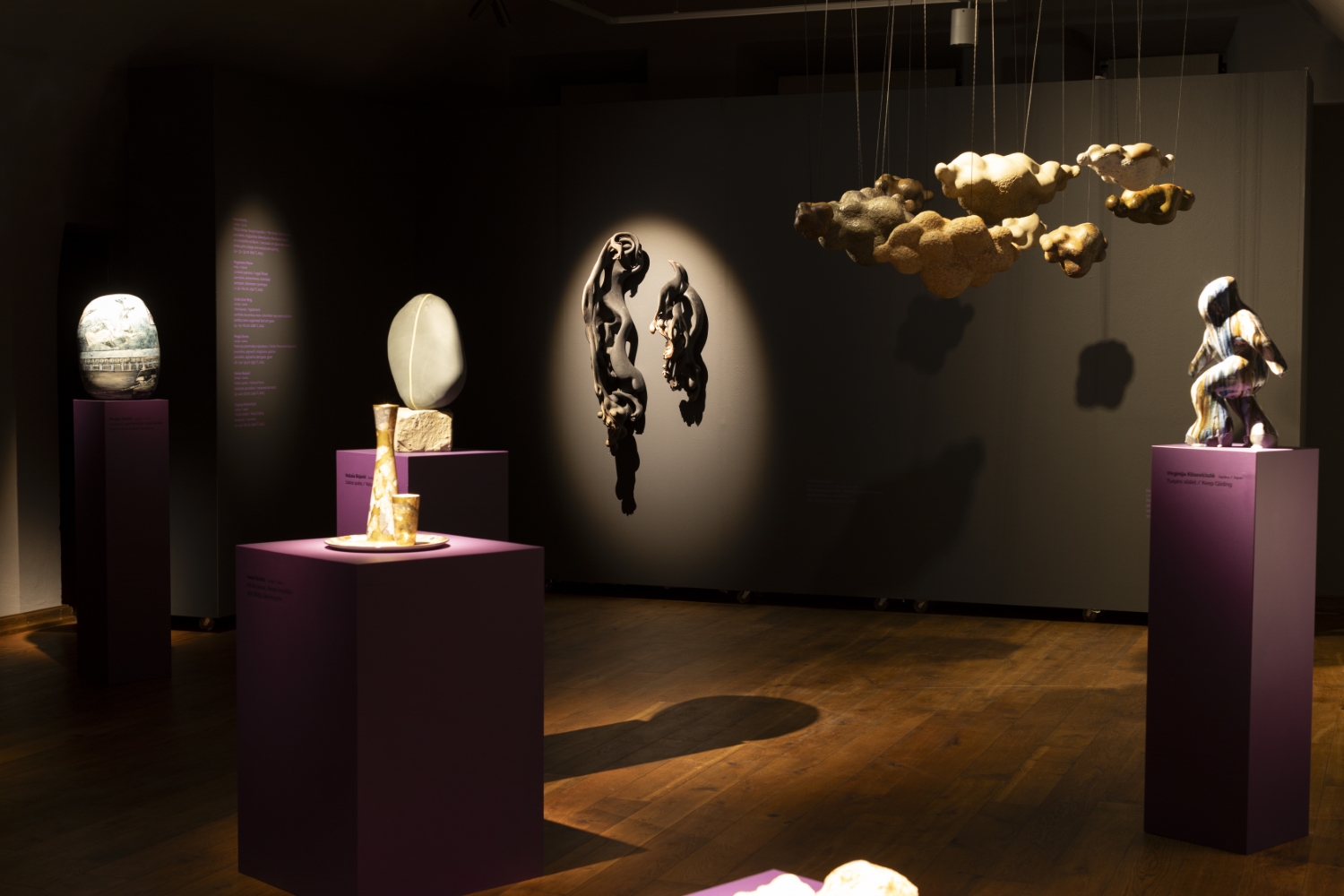In the heart of the Baltics, a remarkable event unfolds every two years, bringing together the vibrancy of contemporary ceramics. The Latvia Ceramics Biennale, a prestigious platform celebrating the legacy of ceramicist Pēteris Martinsons, is more than just a ceramics competition. Last year, I had the honor of experiencing firsthand the complexity and scope of the 4th edition of the Biennale. This edition’s theme, ‘Troubled Waters’, not only reflects the versatility of ceramics but also mirrors the complexities of our current world. From the Martinsons Award’s record-breaking submissions to the unique exhibition-based cultural exchanges with Korea and Portugal, the Biennale is a testament to the evolving and dynamic nature of ceramic art. Read on and explore the stories of the 4th Latvia Ceramics Biennale (9 parts).
- Interview with the curators
- Martinsons Award 2023
- Walking Together – Portuguese exhibition
- Self-Medication – Korean exhibition
- Agnė Šemberaitė – Fear Whispering: A Journey Within
- Sanita Ābelīte – Terra
- Dainis Pundurs – Visualising Gravity
- Kaspars Geiduks – Elements
- Elīna Titāne and Una Gura – 3+4
Interview with the curators of the Latvia Ceramics Biennale
The Latvia Ceramics Biennale is a significant platform for ceramic artists in the Baltic region and beyond. How was the biennale conceived, and what is your vision for the event?
The Latvia Ceramics Biennale was launched in 2015 with the idea of holding an international competition exhibition dedicated to the most internationally recognized Latvian ceramic artist Pēteris Martinsons, calling it the “Martinsons Award”. At that time, we, the Latvian Center for Contemporary Ceramics and the Rothko Museum, immediately understood that the event should be regular and its scale would be large enough. In order to be able to properly prepare it ourselves and also for the artists to have time to prepare high-quality applications, we decided that it should take place once every two years. And that means it is a Biennale. But the Biennale means that one competition exhibition is not enough, and a conceptually thought-out program of events must be created around it. Since its inception, each time, the Biennale program has been devoted to a specific topic, such as the reflection of Latvian contemporary ceramics, the promotion of the Baltic region’s contemporary ceramics, as well as this time with exhibitions of foreign contemporary ceramics in Latvia.
It’s been a pleasure to be a part of the jury for this year’s competition and witness the opening of multiple exhibitions first-hand. Can you walk us through the main events and shows that define the 4th edition of the biennale?
The central event of the Biennale is, of course, the Martinson Award, an international contemporary ceramics competition exhibition. Solo exhibitions of the winners of previous Biennales also became a tradition. This time it was Agnes Šemberaites’ (LT / winner of Martinsons Award’s International Gold in 2021) exhibition “Fear Whispering” and the performative installation “Visualizing Gravity” by Dainis Pundurs (LV / winner of Martinsons Award’s National Gold in 2021). An important place in this year’s Biennale was devoted to two guest country exhibitions – the Portuguese contemporary ceramics exhibition “Walking Together” and the Korean ceramics exhibition “Self-Medication”.
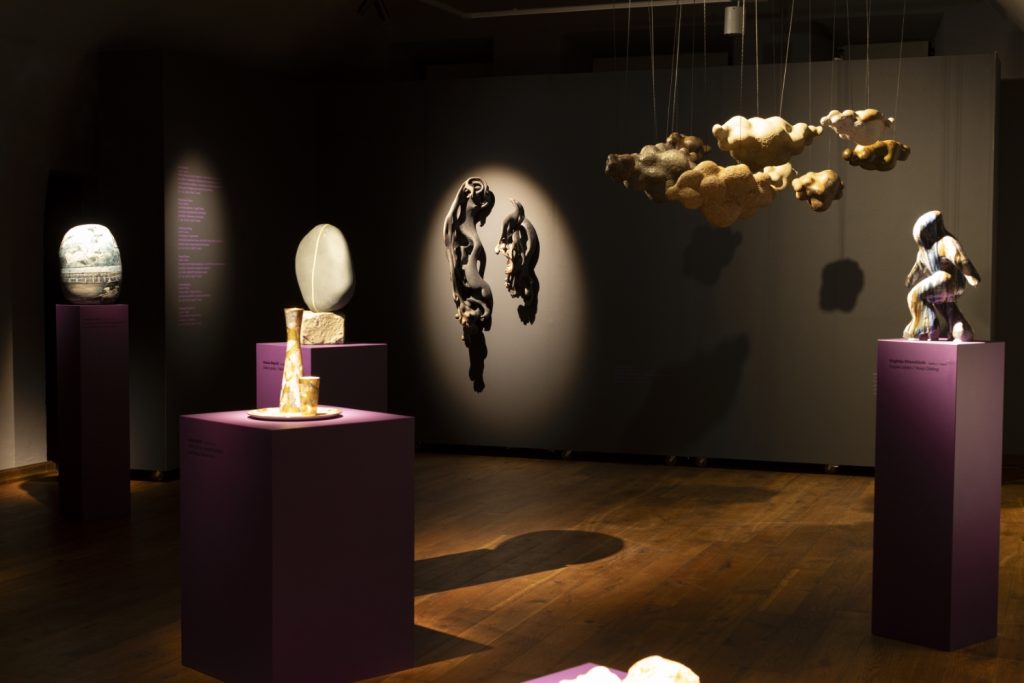
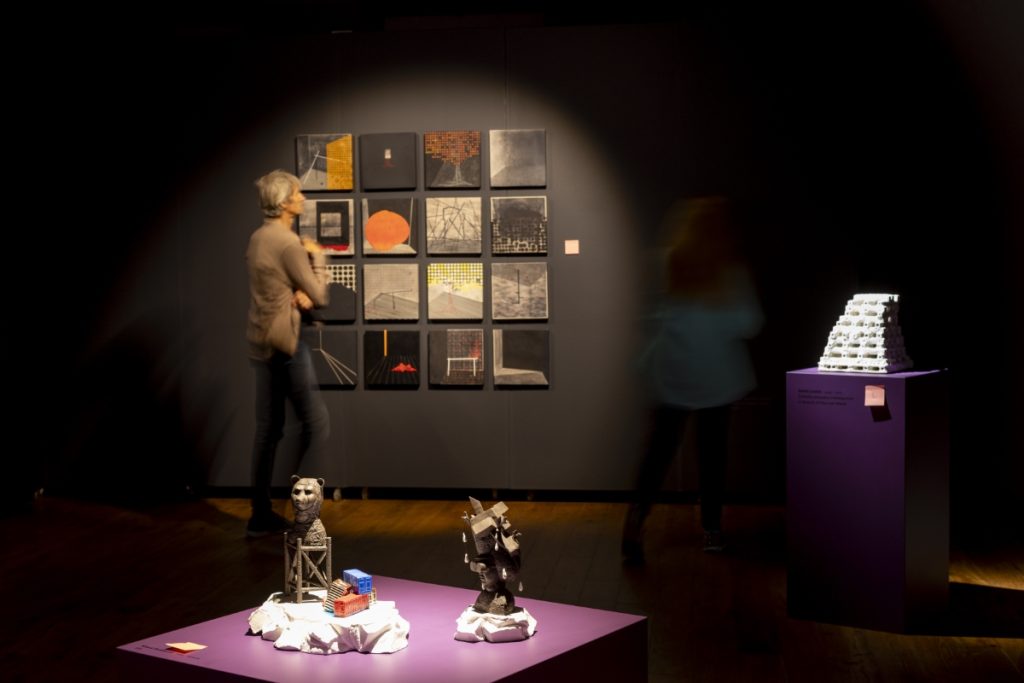
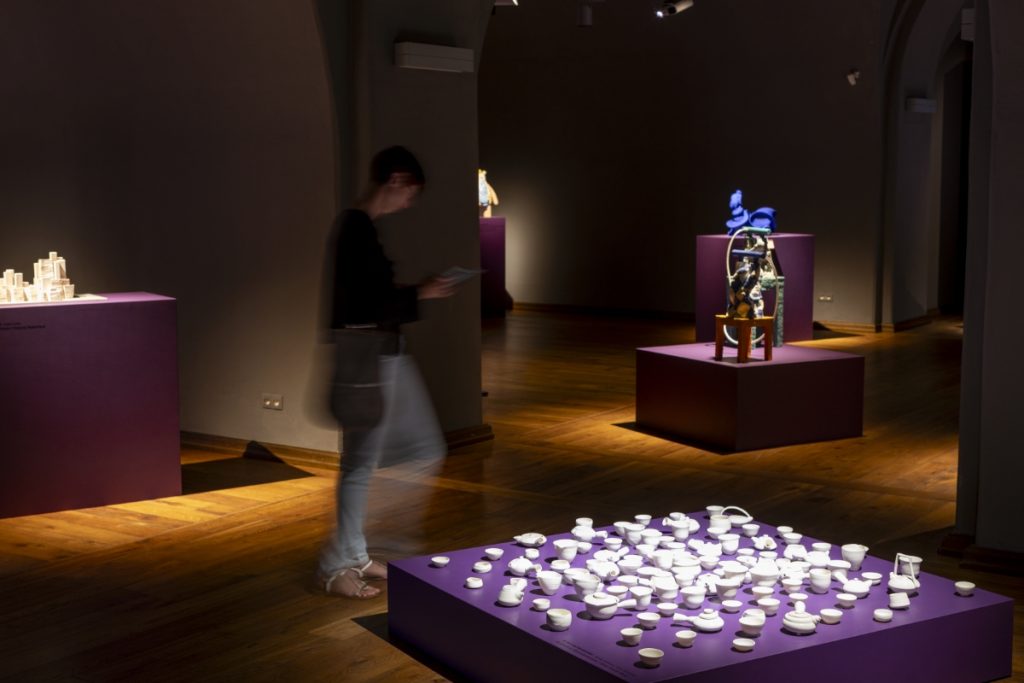
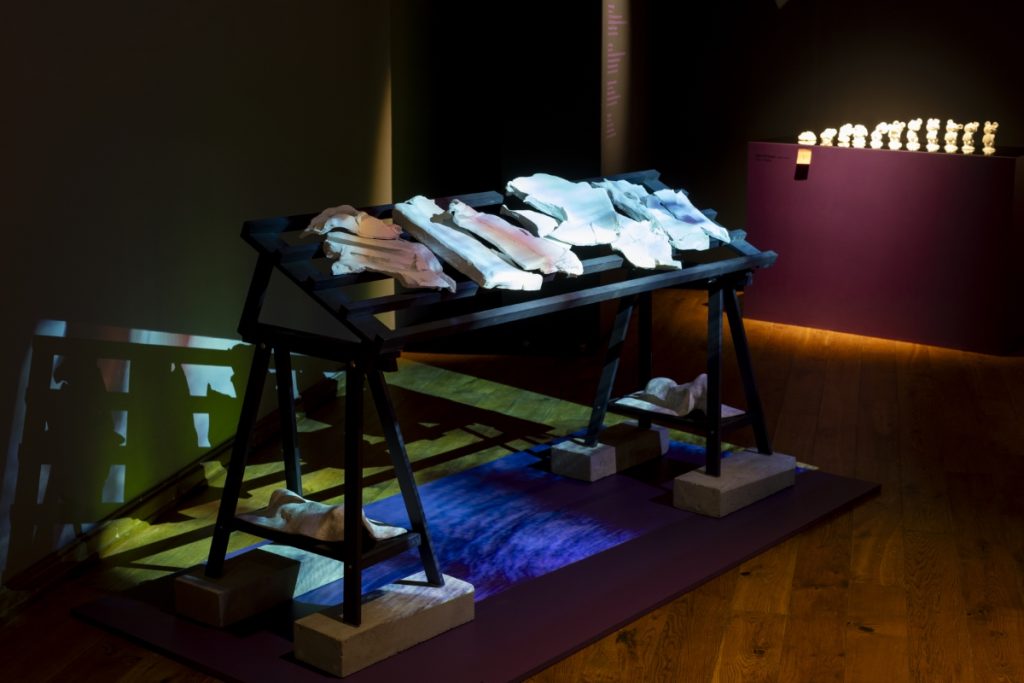
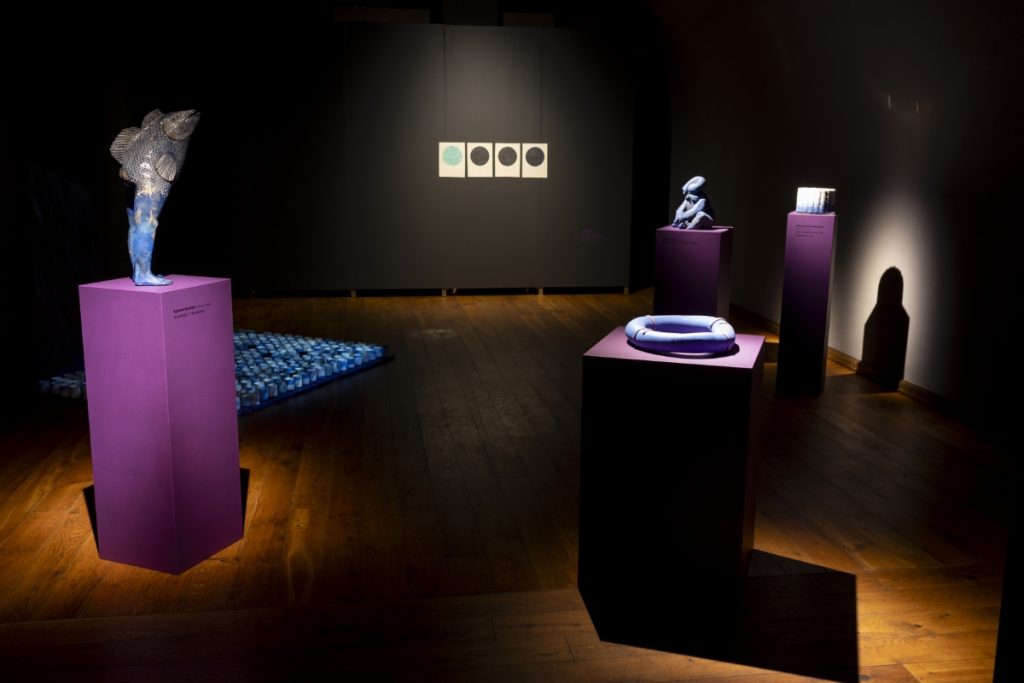
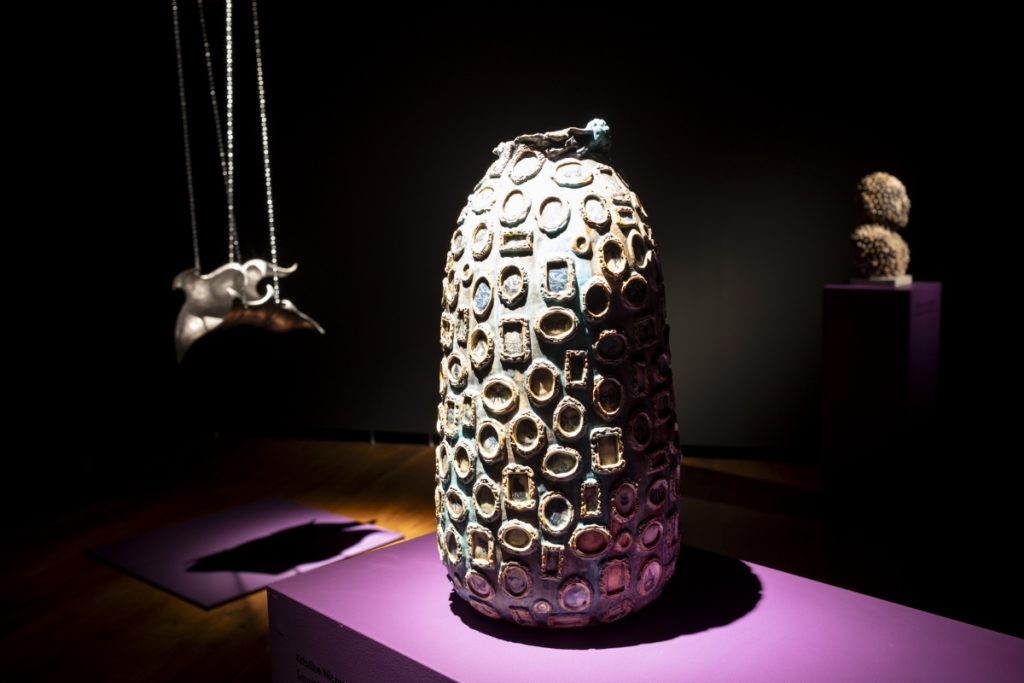
The Martinsons Award 2023 exhibition is on view at the Rothko Museum (Daugavpils, Latvia) through February 18, 2024.
With the Martinsons Award attracting a record number of applications this year, what do you think is drawing artists to this competition?
Martinson Award competition exhibition is one of the central events organized by the Latvian Centre for Contemporary Ceramics. However, the interest in this event is drawn not only by the event itself but also by all the other previously conducted exhibitions and events. Professionalism in displaying the works, different approaches to creating the scenography of each individual exhibition, and general attitude to the ceramics medium; all this work for the past decade has resulted in artists’ trust to create a high-quality exhibition and a good display of each individual work. Sure, there is also a prize motivator in such events, but we hope that our overall activities and recognition for professionalism are the main motivators for being part of the Martinsons Award exhibition.
Could you discuss the influence of Pēteris Martinsons on contemporary Latvian ceramics and how the biennale continues his legacy?
As mentioned, Pēteris Martinsons is Latvia’s most internationally recognized ceramist. In Soviet times, he was almost the only ceramicist who regularly traveled around the world, visiting exhibitions and participating in symposiums. Of course, when he returned home, he always shared his impressions and experiences. For many years, Pēteris Martinsons was also a teacher at the Latvian Art Academy, where he raised and inspired a generation of ceramic artists currently active in Latvian ceramics.
The Latvia Ceramics Biennale takes care of the name of Pēteris Martinsons by organizing a competition exhibition named after him. The Rothko Museum, on the other hand, as a co-organizer of the biennale, preserves and popularizes the legacy left by Martinsons. In 2022, the Rothko Museum opened Martinsons House, where you can view the largest collection of the artist’s works in Latvia, which he donated to the museum himself in the last years of his life.
This year’s theme, Troubled Waters, resonates deeply with current global issues. How have you seen this theme expressed in this year’s biennale submissions?
One of the main substances working with ceramics is water; thus, the theme is relevant to each submitted work. Yet this relevance was seen more vividly for some works – water dissolving porcelain or unfired clay before disappearance, glazes resembling water, or projections of endless majestic waves accompanied by soundscape. Some themes are linked to the field of water – melting icebergs, fountains resembling figures, lifeforms from another water-filled planet, or the depiction of fluidity itself. However, this theme is also relevant as a metaphor, and artists are depicting the inner state of the troubled mind, the feelings of the current state of the surrounding world, and what can make you calm in all this madness of contemporary life.
Could you share some highlights from this year’s winners and what they reveal about current trends in ceramics? And speaking of trends, have you observed any particular directions in the submissions you received?
The main winners of this year’s competition are Sanita Ābelīte (Latvia) with the work “Behind the Mirror” (National category) and Milena Piršteliene (Lithuania) with the work “Panic Rooms” (International category). Both works consist of multiple pieces and depict not only the theme or the title itself but also the vast spectrum of possibilities ceramic materials offer. In Milena’s case, it is a set of 16 perfectly shaped wall pieces, each showing the professionalism of the artist’s technical abilities, and created as separate “room” using graphics and painting techniques on the ceramic surface, all together they create a carpet of stories – troubled mind in a turbulence of time. Sanita follows her artistic path and makes a set of multiple objects – from sphinx or bird-like creatures to chandeliers and bowls, from delicate teapots and goblets to egg-shaped figures with decorative paintings. It is vividly seen how all of her work is a dedication to the material of ceramics and its ability to be plastic and sharp, decorative and functional, fragile and rustic.
Speaking of trends in submitted works, we can point out the use of different media – projections, video fixation, adding video to the work, or adding photography – it seems that some artists see this as the only continuation of developing the ceramics medium. And yet, whenever such thought comes to mind, there are works that once again show the endless possibilities of pure ceramics in the hands of the professional.
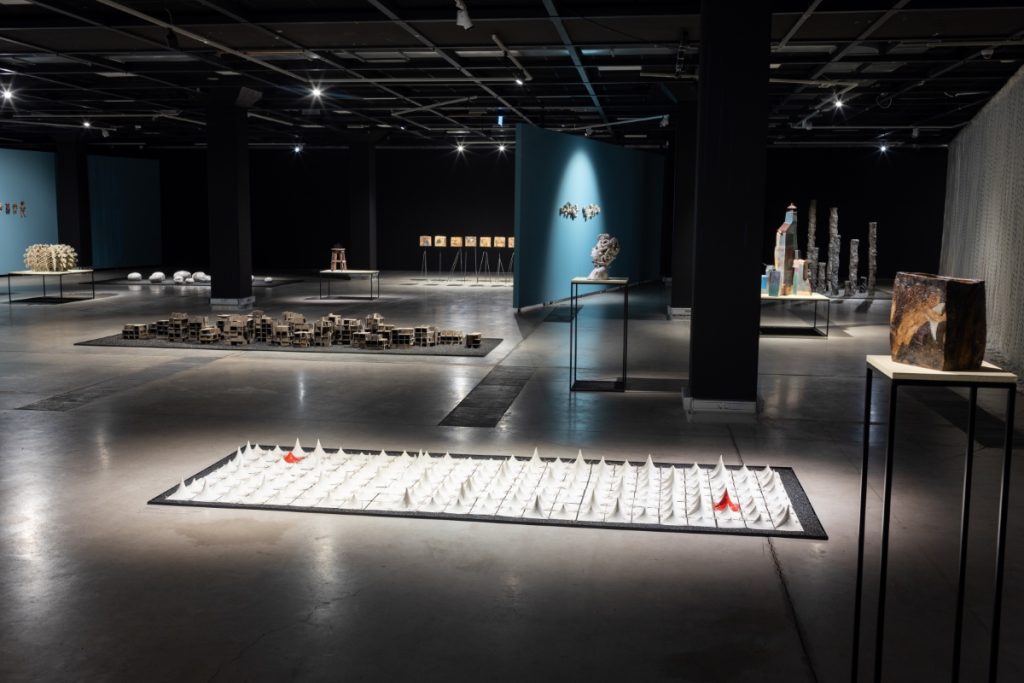
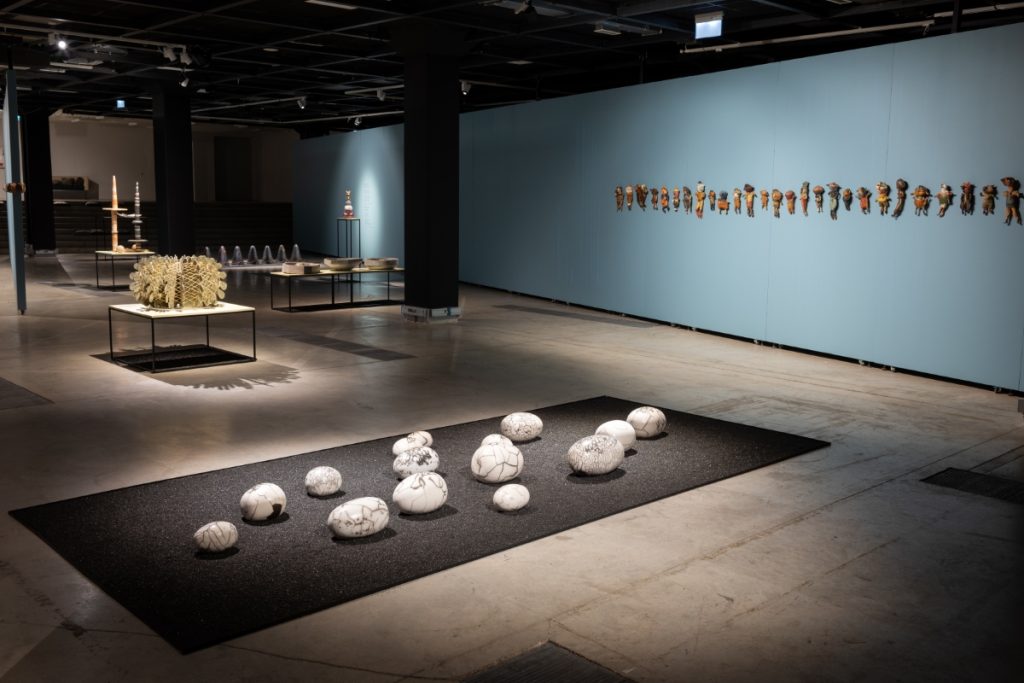
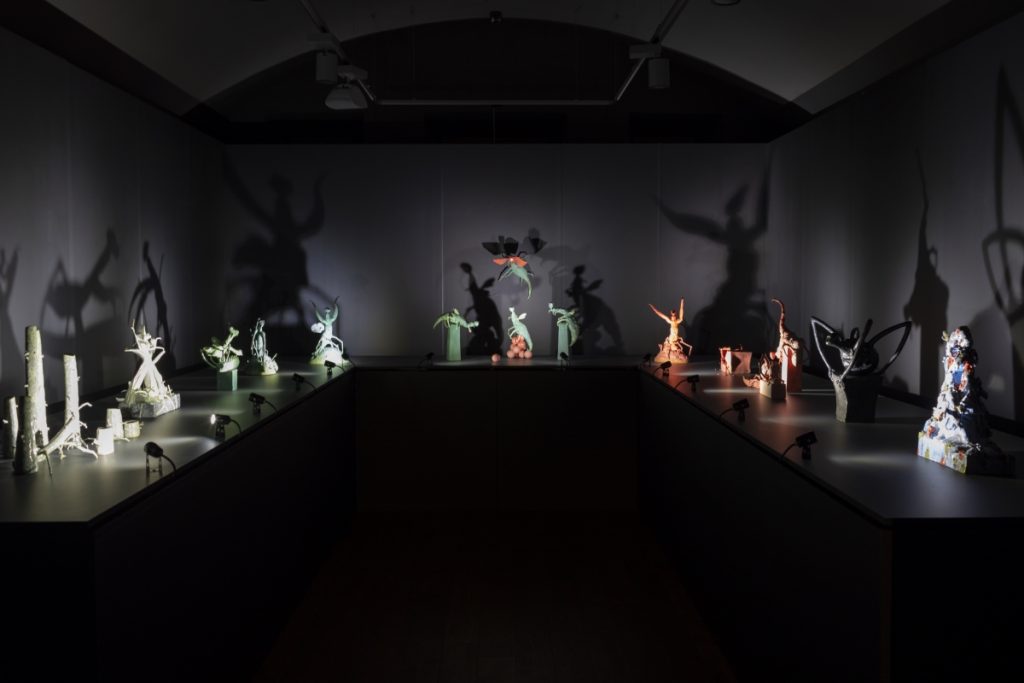
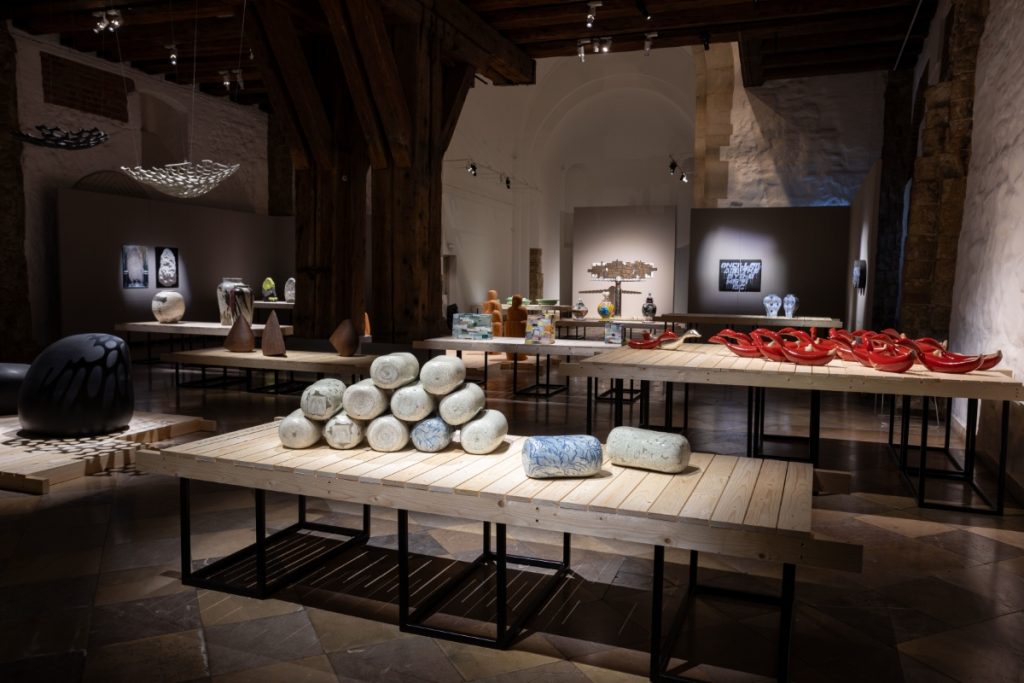
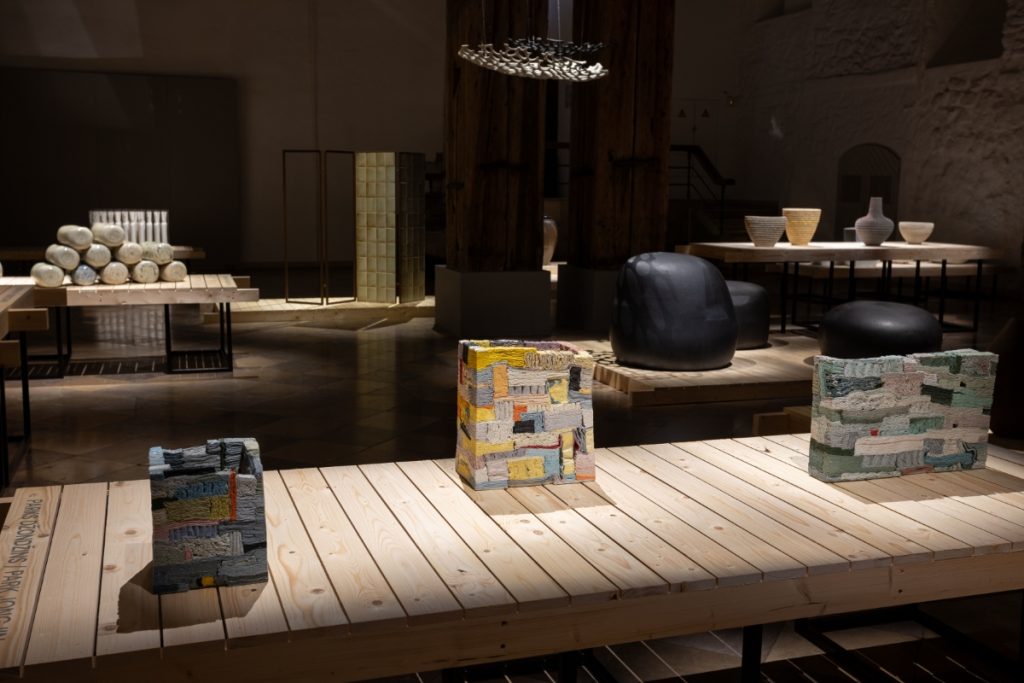
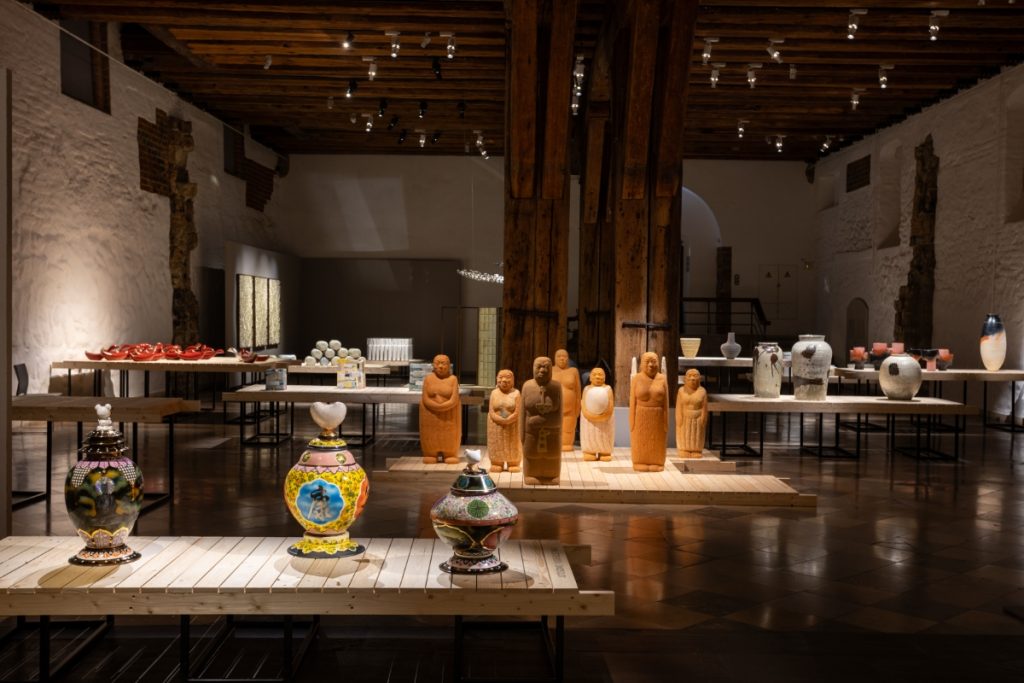
This year, visitors have the unique opportunity to see Korean ceramics in the Self-Medication exhibition at the Museum of Decorative Art and Design in Riga. How did this collaboration come about?
Cooperation with Korean partners, the Korea Ceramic Foundation and the Gyeonggi Museum of Contemporary Ceramics, for the Latvian Center for Contemporary Ceramics began in 2021. In the beginning, we initiated the exhibition exchange project. Everything happened quite quickly and spontaneously, but the result was good. In September 2023, the Gyeonggi Museum of Ceramic Design in Korea hosted the “Safe Horizons” exhibition of contemporary ceramics from the Baltic States, where 75 Latvian, Lithuanian, and Estonian artists were exhibited. Continuing the cooperation, an exhibition of Korean ceramics was opened at the Museum of Decorative Arts and Design in Riga this year as part of the program of the Latvian Ceramics Biennale in 2023.
Can you tell us about the biennale’s travels to Portugal and the reciprocal visit by the International Biennial of Ceramic Art of Aveiro to Latvia?
The partnership dates back to 2021, when the 15th International Biennale of Artistic Ceramics in Aveiro, Portugal, held Biennial NEXT, an online networking event for ceramic competitions and biennales worldwide, which allowed the discovery of different dynamics, goals, and approaches in the rich and creative field of ceramic art. The meeting started a cooperation between the Aveiro and Latvian biennales that set about launching the first exhibition exchange project towards the international promotion of Portuguese and Latvian contemporary ceramics. In this context, the Latvian Centre for Contemporary Ceramics organized the Portuguese exhibition, WALKING TOGETHER, in Riga Art Space, and Aveiro hosted the BALTIC CURRENT, featuring artists from Latvia, Estonia, and Lithuania in October 2023. Both exhibitions are the collective effort of creative teams from both biennales and mark a promising starting point for future cooperation.
Dainis Pundurs presented a one-person performance this year during the opening. What can you tell us about this performance and its place in the biennale?
Dainis Pundurs was a winner of Martinsons Award’s National Gold in 2021. This year, we invited him to participate in the Biennale’s program with his solo project “Visualising Gravity”.
“Visualising Gravity” is an experimental work that opens the viewer’s attention to the dynamic interplay between the ceramic artist’s hands and the material’s physical resistance and illustrates the invisible nature of the ubiquitous force of attraction. The artist interacts with the material and the gravitational force, following a precision-drawn boundary between clay’s material consistency and weight. The resulting shapes can be compared to an imprint left by an invisible force.
The artist does not care whether the process is labeled a performance or a public demonstration of his technique. What matters is allowing the viewer to observe the ceramic material’s usually unseen unique natural properties and experience its primal force. Staging a studio situation in the exhibition space shows ceramics as a diverse medium capable of addressing the viewer in the changing and, therefore, most intimate stage of creation.
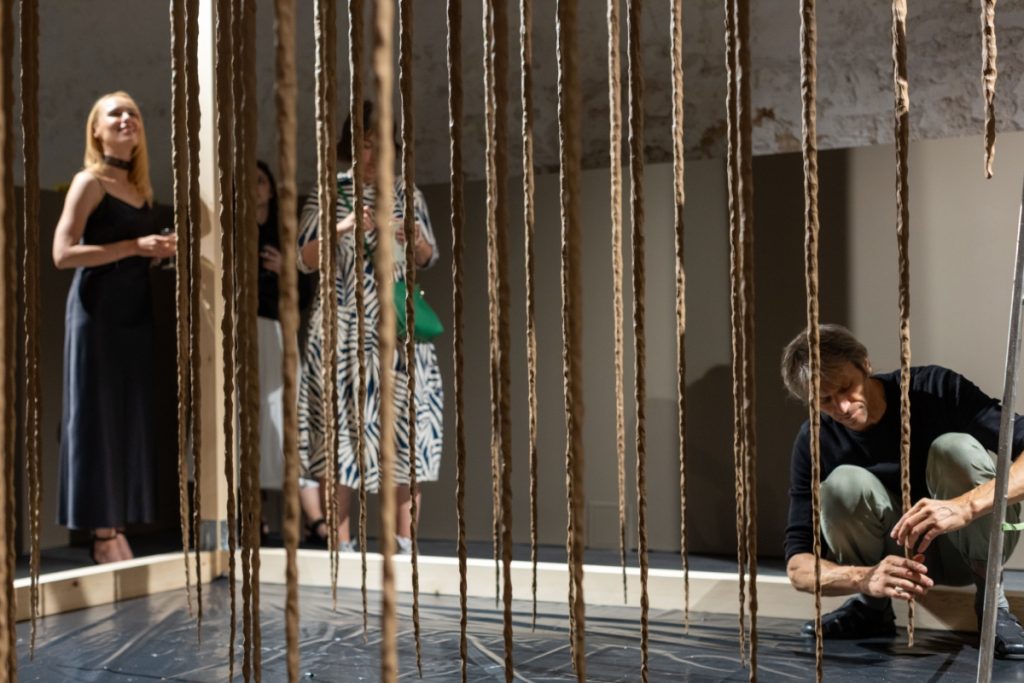
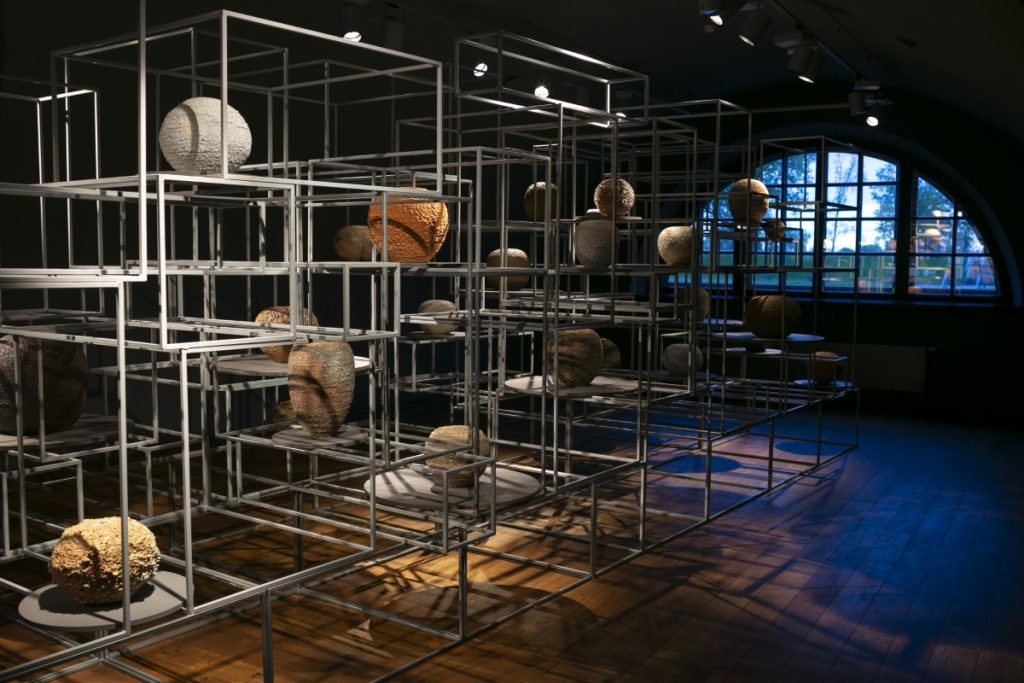
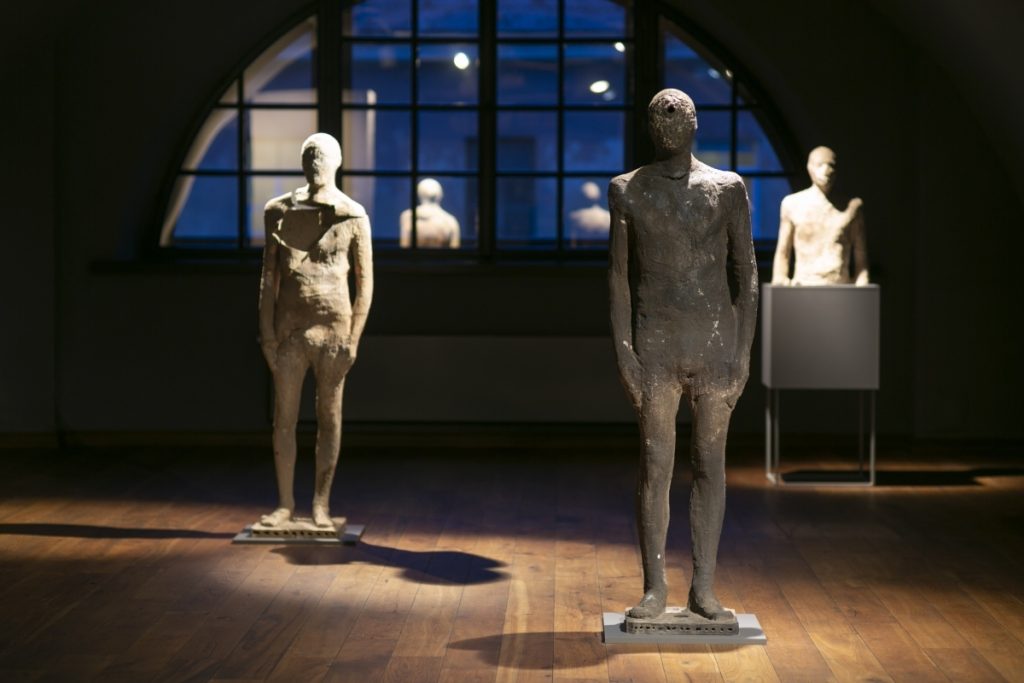
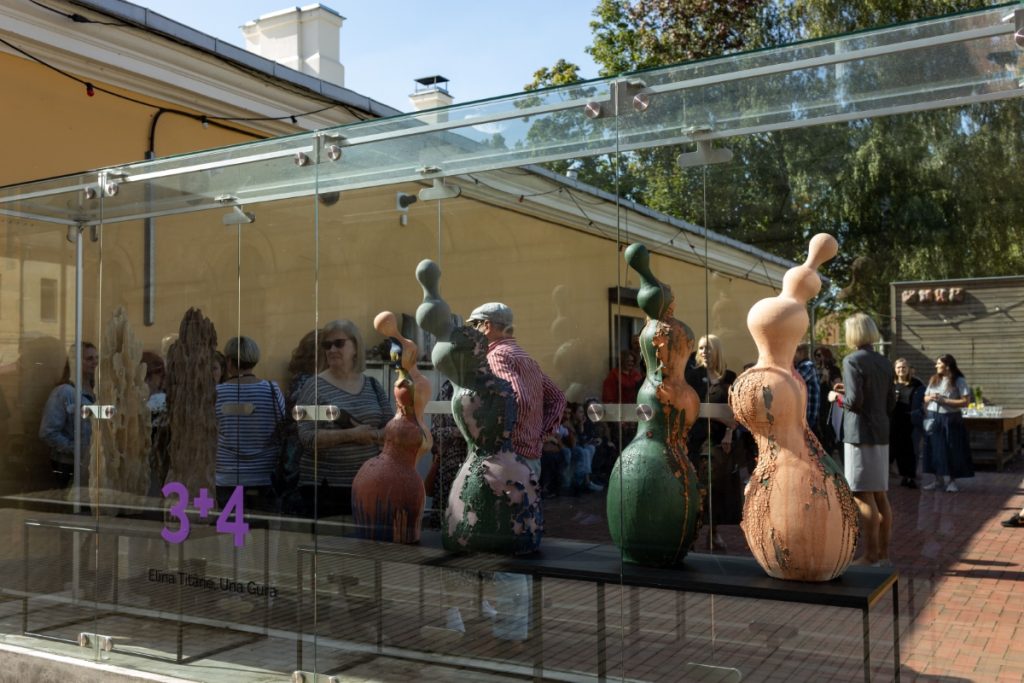
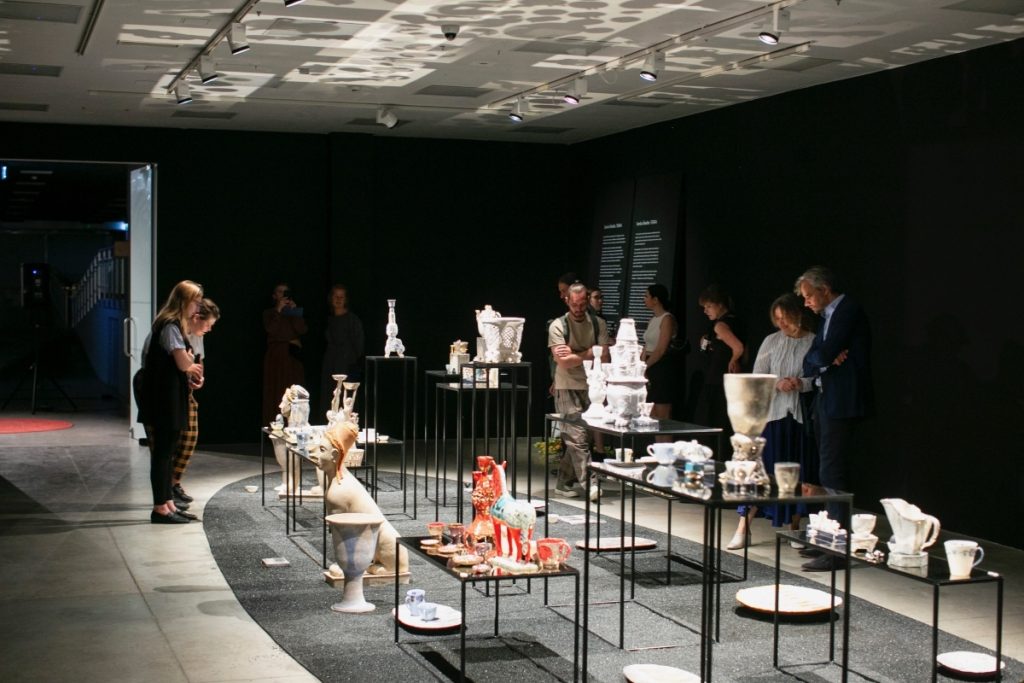
Looking beyond this year’s biennale, what future developments do you hope to see in the field of contemporary ceramics, both in Latvia and internationally?
The development of contemporary ceramics has been very rapid in recent decades, while conventional ceramics biennales and other events are getting old, losing their relevance, and being unable to keep up with the trends in the development of contemporary ceramics. Institutions related to the development of contemporary ceramics should look for new development directions and implement other forms of cooperation with artists. On the other hand, ceramic artists should look more toward visual art without limiting themselves to events exclusively dedicated to ceramics media.
As founders of the Latvian Centre for Contemporary Ceramics, you play a leading role in organizing the biennale. What other activities and programs are you focusing on at the center?
Apart from organizing the biennale, since 2013, the Latvian Center for Contemporary Ceramics has been organizing an annual ceramics symposium, Ceramic Laboratory, and exhibitions of Latvian and foreign ceramicists. One of the directions of our activity is the popularization of the contemporary ceramics of the Baltic region in the world.
Answers by Valentins Petjko & Aivars Baranovskis, Curators of Latvia Ceramics Biennale / Latvian Centre for Contemporary Ceramics
Interview by Vasi Hirdo, editor-in-chief of Ceramics Now, December 2023
Photos by Didzis Grodzs
- Interview with the curators
- Martinsons Award 2023
- Walking Together – Portuguese exhibition
- Self-Medication – Korean exhibition
- Agnė Šemberaitė – Fear Whispering: A Journey Within
- Sanita Ābelīte – Terra
- Dainis Pundurs – Visualising Gravity
- Kaspars Geiduks – Elements
- Elīna Titāne and Una Gura – 3+4


